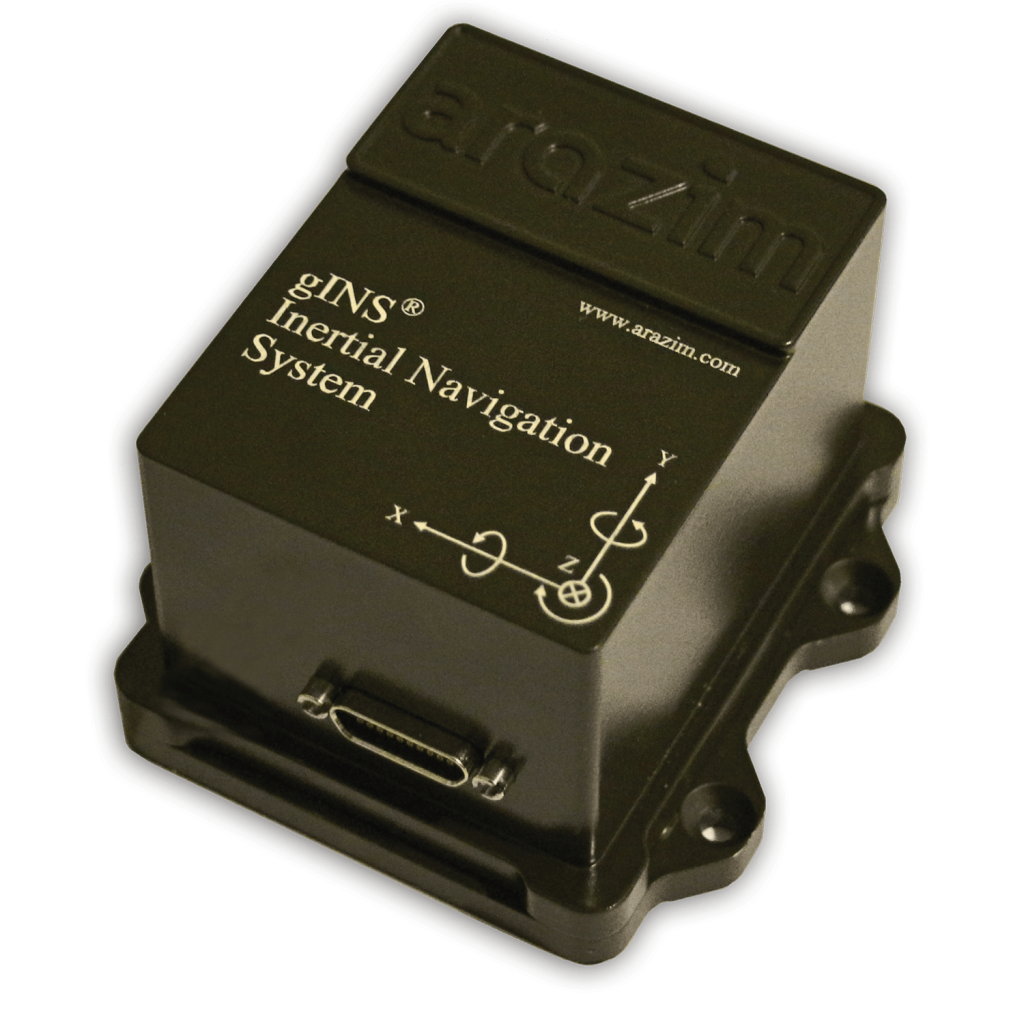
Dynamic Roll/Pitch Accuracy < 0.1⁰
Gyro In-Run Bias < 1 ⁰/hr
Accelerometer In-Run Bias < 20µg
Update rate up to 1,000 Hz
RS232/RS422 Interface
Fully Calibrated for Bias, Scale Factor, Temperature
gX-100 VG/IMU/AHRS ®
The gX-100 is tactical grade MEMS-Based miniature, rugged hi-performance VG/IMU/AHRS unit compromising 3-axis accelerometers, 3-axis gyroscopes, and 3-axis magnetometer, providing calibrated, compensated raw data.
The gX-100 supports several different working modes:
- Vertical Gyro (VG) – Providing Roll/Pitch under static & dynamic conditions
- Inertial Measurement Unit (IMU) – Providing compensated & calibrated raw data
- Attitude Heading reference System (AHRS) – providing Roll/Pitch/Yaw of the body
Specification
Navigation
Heading | Magnetic | 2.0° |
Roll/Pitch | Dynamic | 0.10° |
| Static | 0.05° |
Position | Horizontal | 1.5 m |
SBAS | < 0.5 m | |
RTK | 10 mm + 1ppm | |
Vertical | 2.5 m | |
SBAS | < 1 m | |
RTK | 1.5 cm + 1 ppm | |
Velocity Accuracy | <0.03 m/sec (rms) | |
Output Rate | 1000 Hz | |
Latency | < 5 msec |
GNSS
Receiver Type | Multi – Frequency / Multi – Constellations 432 Channels GPS L1/L2 Glonass L1/L2 Galileo E1/E5b BDS B1/B2 QZSS L1/L5 SBAS RTK |
Update Rate | 20 Hz |
TTFF | Cold start < 25 sec Warm start < 1 sec |
RTK format | RTCM v2.3/3.0/3.2 |
Initialization Time | < 5 sec |
Velocity Accuracy | 0.03 m/sec (rms) |
Time Accuracy | 20 ns (rms) |
Data Output
IMU | Raw Data & Compensated Gyro, Acc, Mag, Baro, Conning & Sculling (ΔV ,ΔΘ) |
| GNSS | UTC, Position, RTK |
| Attitude | Roll/Pitch/Yaw Quaternions, DCM, Euler |
Compliance (Design-To-Spec)
Temp Operation | -40° C to +71° C Mil-Spec 810-G Method 501.5 Procedure I |
Shock | 500g, 3mSec ½ Sine Mil-Spec 810-G Method 516.6 Procedure V |
Vibration | 12 G rms, 20-2000 Hz Mil-Spec 810-G Method 514.6 Category 17 |
Altitude | 70,000 feet Mil-Spec 810-G Method 500.5 Procedure III |
Power | EN55022 Class A&B |
Enclosure | IP65 EN 595 |
MTBF | 50,000 Hours Mil-HDBK 217 |
Sensors
Accelerometer | Gyroscope | Magnetometer | ||||
Full Scale Range | ± 5g | ± 10g | ± 100° /sec | ± 300° /sec | + 2 Gauss | |
Bandwidth | 0…400Hz | 0…50 Hz | 10 Hz | |||
Non Linearirty | 0.15% | < 0.5 % (over FTR & lifet-time) | 0.1% | |||
Bias | ||||||
Stability In-Run | < 30 µg | < 1 °/hr 2 °/hr |
| |||
Repeatability | ± 300 µg | < 0.05 °/sec | ||||
over Temp | < ± 1mg RMS | < 0.05 °/sec | ||||
Scale Factor | ||||||
Repeatability | 500 ppm | < 2% (over FTR & Life Time) | ||||
Over Temp | 100 ppm | < 1% (-40c to + 125c) | ||||
Random Walk | 0.02 m/sec/√Hr | 0.45 °/√Hr0 | 0.45 °/√Hr0 | |||
Resolution | < 100 µg | 0.02 °/sec | 0.02 °/sec | 1.2 mGauss | ||
Noise density | <20 µg /√Hz | 0.01 °/sec/√Hz | 0.02 °/sec/√Hz |
| ||
Vibration Rectification | 100 µg/g2 RMS | |||||
G – Sensitivity | 30° / hr /g | |||||
Latency | < 2 msec | |||||
MisAlignment | <3 mRad | |||||
Communication
Digital Interface | RS232/RS422 |
Frame Rate | 1000 Hz Max |
Peripherals | 2 x GPIO 1 x RS232 |
GPIO Functionality | Trigger Input Sync Out PPS Out Odometer External GNSS External Mangetometer Air-Data |
Start Up Time | < 800 msec |
Power & Mechanical
Input Voltage | 9 VDC – 32 VDC |
Power (incl. Antenna) | gX – 100:250 mA @ 12VDC gX – 200/ gX – 300 :360 mA @ 12VDC |
Connectors | Power/Data: Mini D-Type 21-pin GNSS: SMA |
Size | 80 x 66 x 56 mm |
Weight | <250 gr |
Application

UAV /UGV
The gINS® is small, lightweight advanced navigation system provides accurate filtered Position information Along with accurate Roll/Pitch/Yaw utilizing most advanced MEMS sensors available. The gINS® is excellent candidate for back-up system for large platform or primary solution for tactical applications.

Autonomous Platforms
The internal algorithm of the gINS® is advanced modular open-architecture UKF (Unscented Kalman Filter ) which can accept different external sensors, such as Vision, LiDAR, Odometer and more, making it a strong candidate for autonomous applications.
